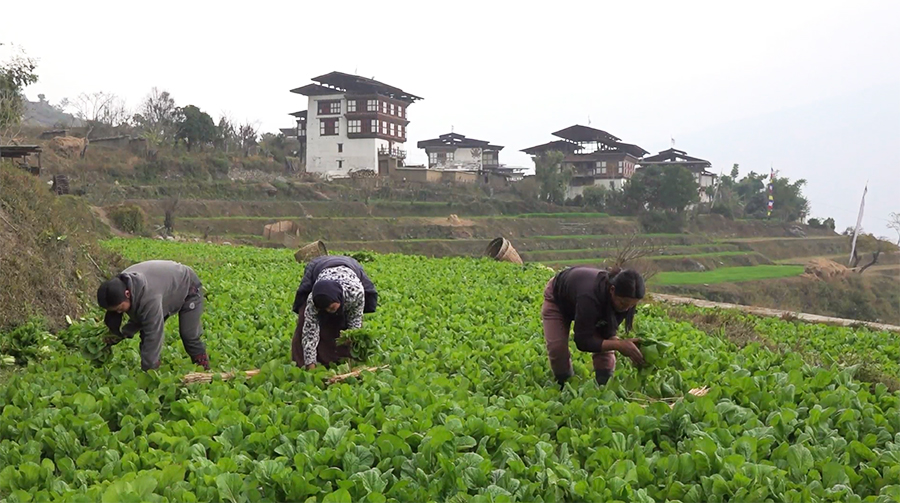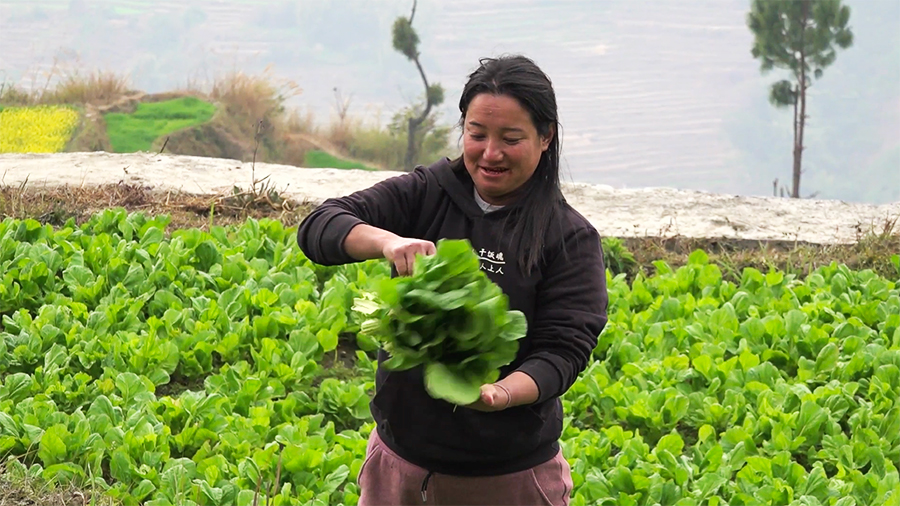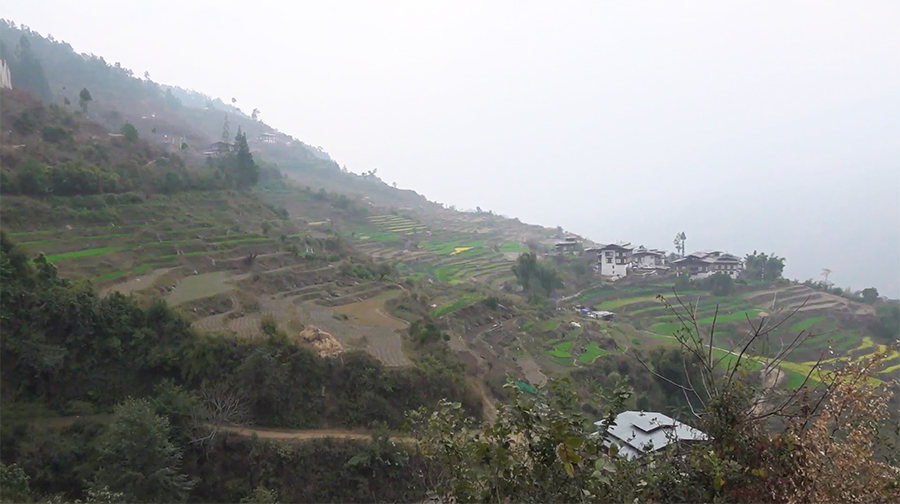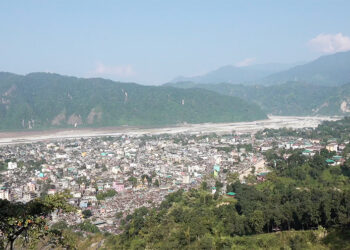 For the farmers of Bjaphu Chiwog in Wangdue Phodrang’s Ruebisa Gewog, every season is a working season. Even during the seemingly ‘off season’, farmers there are busy engaged in winter vegetable cultivation. It has been nearly four months, farmers of Bjaphu Chiwog have been harvesting and selling green vegetables making the most of the limited supply in market. The Chiwog is one of the key vegetable-producing areas in the district, especially during the cold season.
For the farmers of Bjaphu Chiwog in Wangdue Phodrang’s Ruebisa Gewog, every season is a working season. Even during the seemingly ‘off season’, farmers there are busy engaged in winter vegetable cultivation. It has been nearly four months, farmers of Bjaphu Chiwog have been harvesting and selling green vegetables making the most of the limited supply in market. The Chiwog is one of the key vegetable-producing areas in the district, especially during the cold season.
 The weather is gloomy and chilling cold around this time of the year in Bjaphu Chiwog. Yet 39-year-old Mindu Lham spends most of her time in her field harvesting vegetables braving the cold.
The weather is gloomy and chilling cold around this time of the year in Bjaphu Chiwog. Yet 39-year-old Mindu Lham spends most of her time in her field harvesting vegetables braving the cold.
She comes home only for meals and to rest after the day’s work has been completed.
Mindu says her work is always a race against time as the vegetables are perishable that need to be harvested before getting damaged.
 The mother of two grows different varieties of green vegetables including spinach, chives, broccoli, cabbage, spring onions, and coriander. The farmers here usually begin cultivation in August and start harvesting in November until April.
The mother of two grows different varieties of green vegetables including spinach, chives, broccoli, cabbage, spring onions, and coriander. The farmers here usually begin cultivation in August and start harvesting in November until April.
Vegetables are the main source of income for the people of the Chiwog.
Farmers say although they are unable to fetch the expected prices at times, the income they earn is always rewarding nonetheless.
 They mostly sell their vegetables in Thimphu by transporting them in their own vehicles in groups.
They mostly sell their vegetables in Thimphu by transporting them in their own vehicles in groups.
Mindu Lham, a farmer said “We are selling spinach in Thimphu vegetable market only. We sell it to local vendors in bulk for Nu 15 to 30 per bundle. So, we are getting back our money for our hard work. At least, we are getting the money that we spent on working.”
Mindu Lham has been pursuing vegetable cultivation for a long time and it has become one of the main sources of livelihoods. Compared to summer, she grows more vegetables in winter.
“So far, I have earned around Nu 300,000 by selling spinach and other vegetables. I am still expecting to fetch around Nu 40,000 to 50,000 till I finish harvesting all my vegetables. We are using this income to meet the family expenditure.”
Likewise, almost everyone in the Chiwog engages in mass vegetable cultivation for commercial purposes.
They primarily grow various species of spinach. They harvest their vegetables every day, wash them, and then load them into vehicles by evening for transport.
This income-generating activity helps them maintain self-sufficiency.
Seldon, a farmer said “I have cultivated vegetables on around 25 decimals of land last year and did the same this year. The earnings differ depending upon the situation. Sometimes, I get around Nu 100,000 to 200,000 from selling vegetables. We don’t have market problem here. Our work is to send it from the village. Our people are taking it to market. So, we are able to meet all our expenditures vegetable cultivation works without having to depend on anyone.”
Kuchung, another farmer said “Our livelihood primarily depends on the income from agricultural products. Selling vegetables in Wangdue Phodrang’s Bajo town is challenging because many farmers bring their produce there. Therefore, we transport and sell our vegetables in Thimphu instead. I have heard that in some places, people even take loans to cover their children’s expenses. However, in our case, we are able to sustain ourselves with our own income without relying on others.”
 Farmers in the Chiwog plan to expand vegetable cultivation hereafter, as they are getting chain-link fencing this year.
Farmers in the Chiwog plan to expand vegetable cultivation hereafter, as they are getting chain-link fencing this year.
Bjagphu Chiwog has around 25 households and almost everyone cultivate vegetables as a steady source of income.
Changa Dorji, Wangdue Phodrang
Edited by Phub Gyem







